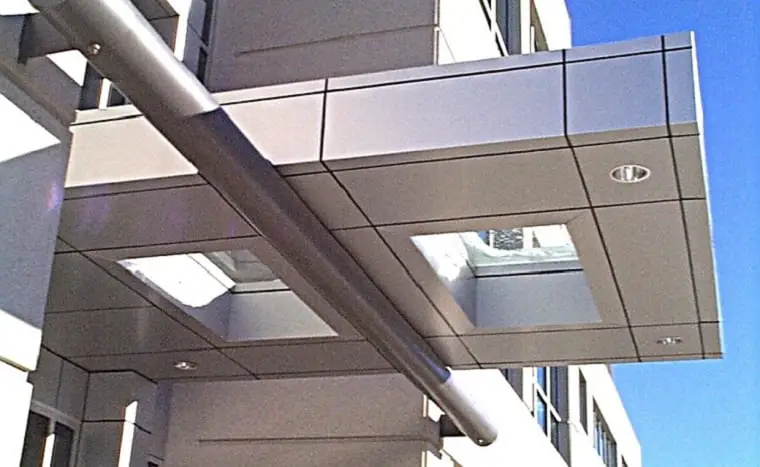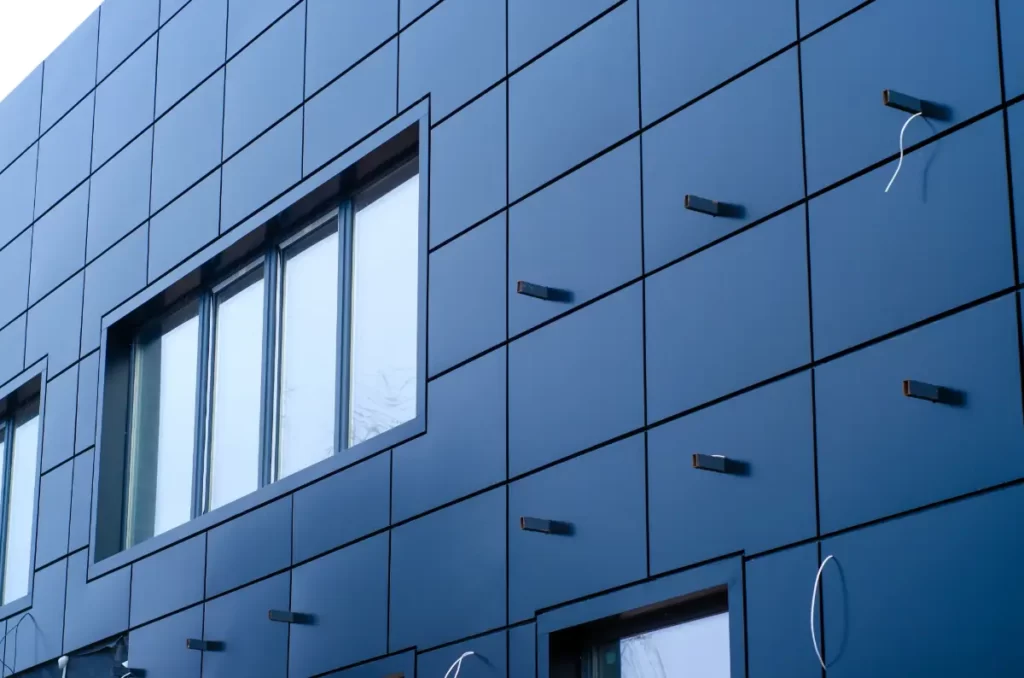As in other industries, substantial advancements are being achieved in the architecture industry. As the industry expands, so does the desire for more visually appealing items. Cladding in construction refers to covering building components with another layer to provide aesthetic and practical benefits.
Cladding for building facades is one of the world’s fastest expanding industries. There are various types of metal utilized in the cladding industry. Aluminum Cladding is quite popular due to its high quality, and it is ideal for long-lasting façades.
Aluminum is one of the most widely utilized metals on the planet. Except for iron and steel, it is utilized more than any other metal. Other popular metals for cladding include stainless steel, zinc, copper, and titanium. All metals provide distinct advantages to structures and their construction.
Aluminum Cladding is a type of cladding system constructed of aluminum, a strong and lightweight metal. It is a tool designed to provide the architect maximum creative freedom, allowing him or her to build structures that would otherwise be impossible to build using plastic, wood, or other materials. It can also be replaced and updated during the course of its life.
Aluminum Cladding has much more advantages and benefits than other metals. It is critical to consider these benefits and advantages when planning building façades.
Most Important Privileges Provided by Aluminum Cladding:
High Sustainability
The durability of aluminum cladding is a critical aspect in the construction business (environmental factor). Aside from being 100 percent recyclable, it may be utilized as a rain screen system and greatly enhances thermal insulation, resulting in energy savings. By being put to the exterior of a structure, it provides acoustic and thermal insulation without sacrificing any floor area. It aids in decreasing noise disruption for tenants while also lowering energy costs.
This is truly great for high-rise buildings and apartment complexes where energy efficiency is a major concern. It is also becoming increasingly crucial in metropolitan locations where there is a considerable demand for residential and office space near busy roadways, airports, and railway stations. Aluminum is also corrosion resistant due to its protective oxide covering. Unlike other metals such as copper, aluminum is not affected by weather and does not rust or corrode over time.
Safety and Practicality
Aluminum is also incredibly functional and environmentally friendly. Because of the lightweight and sturdy nature of aluminum, extra pressure cannot be applied to the building framework. It is about one-third the weight of steel. It weighs approximately 2.7 pounds. This is one of the primary reasons why most architects consider employing Aluminum Cladding for their structures. Buildings that are getting older and older frequently don’t have the capacity to accommodate considerable development. Due to their lightweight nature, aluminum claddings can be placed to the exterior of ancient buildings.
Because of the light weight of aluminum, the installation of aluminum façade systems is more simpler. It is intended to be setup quickly and easily. It also does not disturb the interior of the building because it is installed directly into the external walls. It can be added without requiring any changes or reinforcements to the existing building structure.

Versatility
It is critical to realize how adaptable aluminum is. Aluminum cladding offers not only a variety of colors, but also designs, shapes, sizes, effects, and so on. It is virtually always adaptable. It is one of the most easily melted and deformed metals. It is incredibly easy to form and melt due to its relatively low melting point. As a result, it is extensively employed for specific designs that demand curved and unusual shapes in façades. For greater three-dimensional effects, architects create waved and corrugated patterns, to name a few possibilities.
Maintainability
Aluminum Cladding requires only periodic cleaning for cosmetic reasons. It translates into an environmental and cost advantage during the product’s lifetime. Because it does not burn, it is categorized as a non-combustible material. This does not mean that it is immune from fire laws, but it has a benefit over wood. This cladding is also extremely weather resistant. This also means that aluminum is a cost-effective solution during its lengthy lifespan.
Recyclability
Aluminum Claddings are environmentally benign because of their recyclability and ability to reduce the quantity of material that ends up in landfills. They are easily recyclable after their useful life as claddings. As a result, the carbon footprint associated with aluminum cladding can be drastically reduced.
To know other construction guides, tips, and methodology for beginners, veterans, and contractors, please see here.
To know the flood prone areas in the Philippines, Top 10 Flood-Prone Areas to Live in the Philippines.
To know more about Concrete Hollow Blocks, Simple Reasons Why Hollow Blocks are Highly Used in the Philippines
To know more about Hammers and Nails, Tips for Guaranteed Best Technique for Hammering Nails
To know more about Tees and Wyes, What is the Guaranteed Best to Use: Sanitary Tee Vs Wye


I like that you said how it offers acoustic and thermal insulation by being attached to the outside of a building without taking up any floor space. I’ll give this some thought because I’m getting ready to renovate our home early next month. I must have new house cladding put in since I want an outside that can exude a vintage sense. Thanks!
Oh yeah! My father-in-law would love this article because he’s in the middle of upgrading the exterior of his house. Who would’ve thought that aluminum cladding can be highly durable and versatile, huh? Well, he should certainly consider this option when ordering an installation soon after.